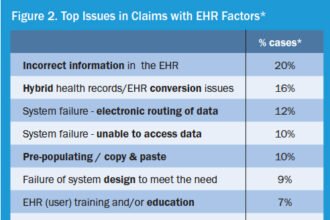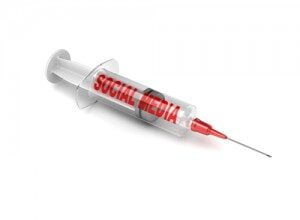 New study findings for those 60 and over show an increase in shingles vaccination rates when providers communicate with patients through EHRs and portals.
New study findings for those 60 and over show an increase in shingles vaccination rates when providers communicate with patients through EHRs and portals.
 New study findings for those 60 and over show an increase in shingles vaccination rates when providers communicate with patients through EHRs and portals. The opportunity that exists is to overcome the low vaccination rate with increased awareness, access to clinics able to store the fragile vaccine, and compensating for the fact that face-to-face appointments don’t offer enough time to discuss shingles.
New study findings for those 60 and over show an increase in shingles vaccination rates when providers communicate with patients through EHRs and portals. The opportunity that exists is to overcome the low vaccination rate with increased awareness, access to clinics able to store the fragile vaccine, and compensating for the fact that face-to-face appointments don’t offer enough time to discuss shingles.
According to Science Daily, the team conducted a six-month study that “used electronic medical record (EMR) data to identify more than 2,500 patients over the age of 60 without a documented herpes zoster vaccination. Some were randomized to receive information about shingles via a secure email linked to their online personal health record (PHR) or a mailed postcard, while others received no information outside what they may have gotten in a routine doctor visit.
“Pharmacists then reviewed the EMRs of patients who had received emails or mailed information to identify eligible vaccine candidates, and then sent them a vaccination prescription via standard mail, along with a list of local pharmacies that offered the vaccine. Vaccine fulfillment was tracked by reports submitted to the team by local pharmacists.”
The study found, “Patients with an active PHR that received email information on shingles had the highest vaccination rate of 13.2 percent compared to a rate of 5 percent for patients with an active PHR that did not receive the email information. For patients that did not have an active PHR but did receive mailed information, the vaccination rate was 5.2 percent compared to a rate of 1.8 percent for patients without an active PHR and received no information.”
Patients who read the notification through their personal health record had the highest rate of vaccination at 13.2 percent. Only five percent of patients with portal access but without a special notification were vaccinated. The mailed postcard resulted in 5.8 percent vaccination; only 1.8 percent of those who were not contacted about the virus were vaccinated, as reported.
The portal also helped facilitate increased efficiency for staff. It took pharmacists a matter of minutes to review the chart and mail out a prescription. This saved the physician time, the patient time, and improved the overall health of our patients. By utilizing pharmacists as members of a care team, many perceived logistical barriers were managed and overcome.
(shingles vaccination rates / shutterstock)






